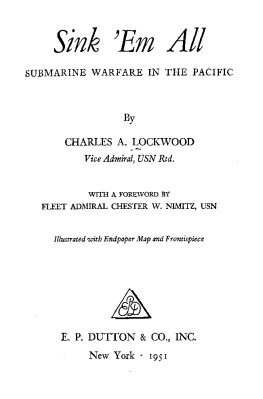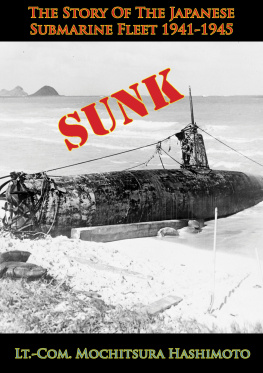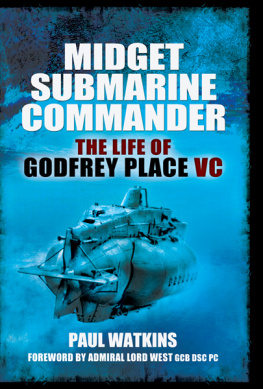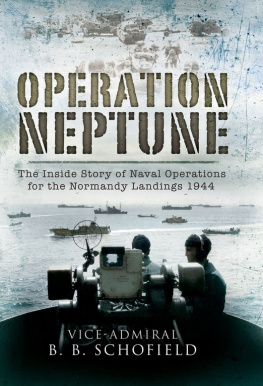This edition is published by PICKLE PARTNERS PUBLISHINGwww.picklepartnerspublishing.com
To join our mailing list for new titles or for issues with our books picklepublishing@gmail.com
Or on Facebook
Text originally published in 1926 under the same title.
Pickle Partners Publishing 2015, all rights reserved. No part of this publication may be reproduced, stored in a retrieval system or transmitted by any means, electrical, mechanical or otherwise without the written permission of the copyright holder.
Publishers Note
Although in most cases we have retained the Authors original spelling and grammar to authentically reproduce the work of the Author and the original intent of such material, some additional notes and clarifications have been added for the modern readers benefit.
We have also made every effort to include all maps and illustrations of the original edition the limitations of formatting do not allow of including larger maps, we will upload as many of these maps as possible.
HELL AT 50 FATHOMS
BY
CHARLES A. LOCKWOOD
Vice Admiral, USN (Ret.)
HANS CHRISTIAN ADAMSON
Colonel, USAF (Ret.)
With a Foreword by
C. B. MOMSEN
Vice Admiral, USN (Ret.)
DEDICATION
Respectfully dedicated
to
the memory of
FLEET ADMIRAL ERNEST J. KING, USN
Commander-in-Chief, U.S. Fleet, World War II
A qualified submariner
whose dynamic leadership and
tireless pioneering efforts as
Commander, Submarine Base, New London
and
Commander S-51 and S-4 Rescue and Salvage Forces
furnished inspiration and driving incentive to the progress made by the U.S. Navys Constructors, Engineers, Medical Corps, Salvagers, Deep-Sea Divers, and Submarine Service and by civilian submarine builders in developing procedures and equipment for rescuing imperilled submarine crews and recovering their vessels from the clutches of the sea
FOREWORD
Legends of the sea, which have come down to us through the ages, are shrouded in superstition. Everywhere men who follow the sea respect the many traditions which bring lucksometimes good, sometimes bad.
Neptune (Poseidon to the Greeks) is the Royal Master of all of the briny deep. Bad luck is blamed on the dirty work of some legendary god or demon of the deep. It is never the fault of the honest sailor.
During the Squalus salvage job, one of the most difficult ever undertaken, much of the hard luck encountered was the work of gnomes. The gnomes (called ganomes by the divers) come out of the bottom of the sea to tangle lines, disconnect hoses, steal the divers tools, and perpetrate all sorts of deviltry to foul up the poor divers work.
In all submarine accidents, ganomes play a part. With their well-known ability to swim through earth as easily as water, they have no difficulty in passing through the steel hull of a submarine to put sand in a bearing, poke a hole in a pipe, open a hatch, start a fire, or do such other mischief to punish the audacious polliwog who dares to enter into the domain of Neptune.
Thus, because submariners dare to leave the surface of the sea, they find in that deep, dark, mysterious unknown a hell at 50 fathoms.
Hell at 50 Fathoms, written by Vice Admiral Charles A. Lockwood and Colonel Hans Christian Adamson, tells the story of submarine accidents of the United States Navy. It describes the bone-chilling experiences of valiant sailors who risked their lives to perfect underwater craft.
Vice Admiral Lockwood, now retired, so well-known to submariners as the World War II Commander of the Submarine Force, U.S. Pacific Fleet, has always been interested in diving and all other underwater exploits. This interest was exemplified when, in July 1943, he led a group of swimmers in the recovery of a live torpedo. The torpedo had been test fired against a cliff in an effort to discover the cause of faulty exploders. This effort was successful. The fault was disclosed and corrected, much to the relief of submarine captains who had seen so many torpedoes bounce off Japanese ships without exploding. Lockwood was awarded the Legion of Merit for this conspicuous gallantry.
This is a striking example of the resourcefulness inbred in submarine sailors. Each mishap discloses a weakness that is corrected. The tragedy of the sinking of the S-4 brought forth, with stunning forcefulness, the inadequacy of our technical competency to deal with a simple rescue problem. Within the steel hull of the S-4, brave men hammered out signals pleading for helphelp that never came. Using the restored S-4 as an experimental laboratory, the Navy produced dramatic results in learning how entrapped men can escape, how surface crews can rescue them, and how to salvage a submarine for further service.
As was demonstrated 12 years later, in 1939, by the rescue of 33 men from the Squalus at a depth of 243 feet, the pleas of those men in the S-4 at a depth of only 102 feet could have been answered with the greatest of ease.
Knowing the authors of this book as I do, I can attest to the accuracy of their reporting. Lockwood served in submarines from the dark ages before World War I, when the service lived off crumbs and the submarine arm of the Navy was considered only a nuisance. Today, the submarine and its bag of weapons has virtually no antidote. It is a weapons system which can destroy targets anywhere on the face of the globe.
The modern submarine is a supertool of deterrence against the threat of a nuclear holocaust which could destroy all mankind. It is fitting that the rags to riches story of the underseas fleet be told. It is particularly fitting that the submarine accidents, tragedies, and heartbreaks that have bedeviled those intrepid sailors be recounted so that the slow, hard process of bringing about perfection can be understood.
With this thought in mind, I recommend that this book be read and enjoyed. It will help the reader to realize the enormity of an accomplishment that could only have been achieved by men completely dedicated to an ideal.
C. B. MOMSEN
Vice Admiral, USN (Ret.)
INTRODUCTION
The purpose of this book is to describe and re-enact the frequently tragic, often spectacular, and always dramatic disasters in the U.S. Navys Submarine Service. Every accident delineated within these pages had characteristics of paramount significance that made it a shocking and terrible object lesson which led to improvements in design, equipment, and training.
Present-day nuclear-powered submersible men-o-war are eons apart from the humble little pig-boats the Navy sent to sea soon after the turn of the century. And yet, until not so long ago, submarines carried more dangers to their safety and survival within their own hulls than were posed by the threat and power of the hostile sea.
First on the roster of enemies within stood the green death, from chlorine gas generated by the mixing of sea water and sulfuric acid in the battery cells. This gas was of a sickly green color and a quick killer, hence its name.
Second came hydrogen gas. This treacherous, tasteless, odorless, and invisible gas was created in the batteries under conditions of charge or certain conditions of discharge. A 4 per cent mixture of it with the air in a submarine could transform it into a powerful explosive.










